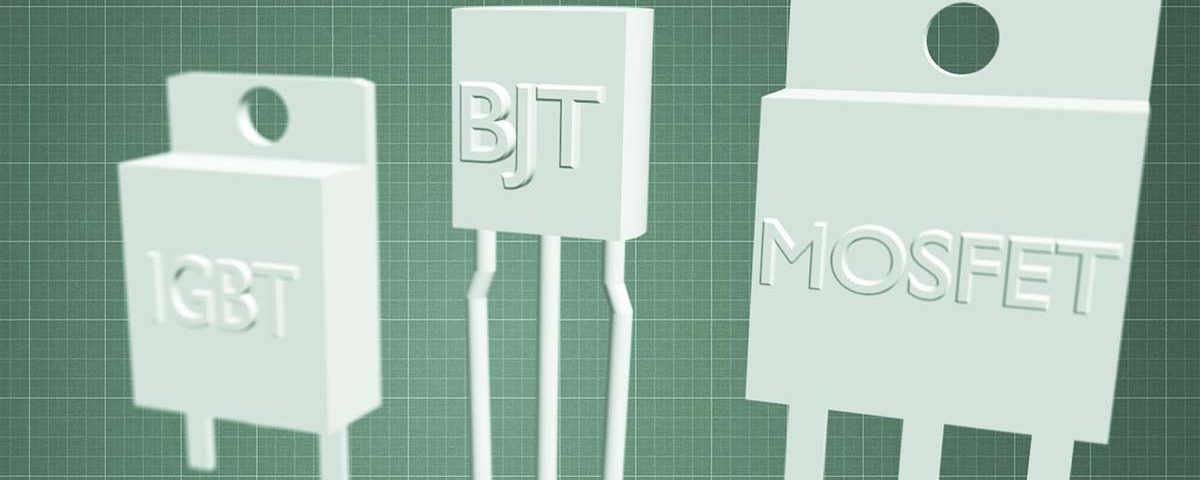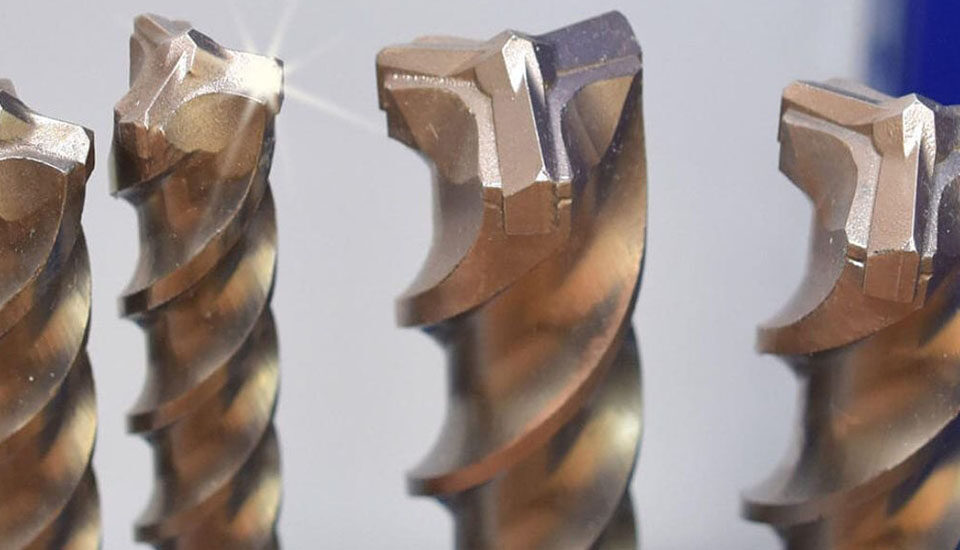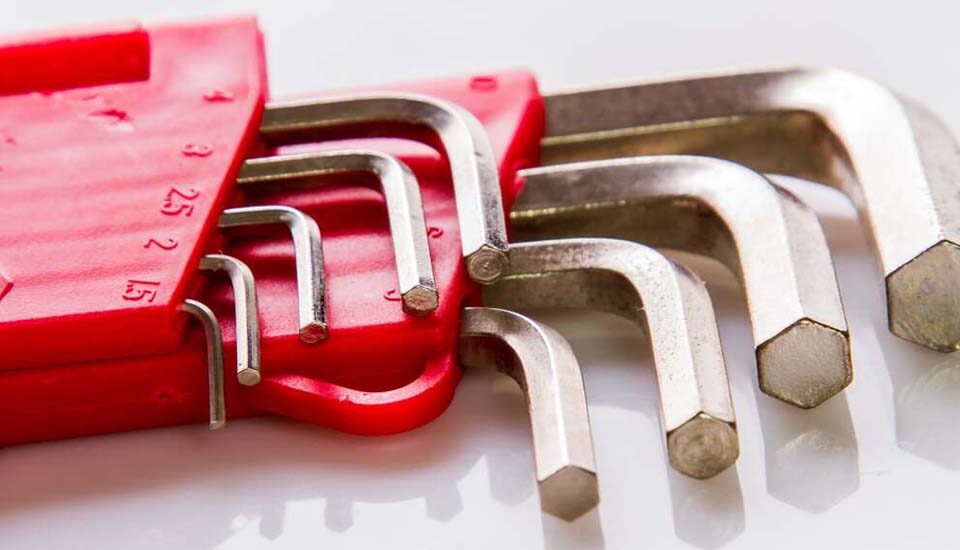What is the difference between MOSFET and IGBT?

Insulated Gate Bipolar Transistor (IGBT) and Metal Oxide Semiconductor Field Effect Transistor (MOSFET) are two types of transistors that are the main building blocks of modern electronic circuits. Both IGBT and MOSFET are voltage control devices. However, they differ in several aspects. In this article, a general view of how these two transistors work and their differences will be compared.
What is IGBT?
IGBT stands for Insulated Gate Bipolar Transistor. IGBT is a three-terminal semiconductor device used in various electronic circuits for switching and amplifying signals. In fact, IGBT (Insulated Gate Bipolar Transistor) is a type of powerful transistor that is a combination of bipolar junction transistor (BJT) and MOSFET (Metal-Oxide-Semiconductor Field-Effect Transistor). These transistors are used for power electronics applications.
IGBT is produced in a compound and complex structure. This structure includes three main layers: N-Switch semiconductor, P-Switch semiconductor and Control Layer. The control layer acts like the gate of the MOSFET transistor and gives the current control power to this device. It also has three terminals, the three IGBT terminals are: emitter (E), collector (C) and input (G).
What are the advantages of IGBT?
The main advantage of using IGBT is to combine the superior characteristics of MOSFET and BJT transistor. IGBT provides high current and high power controllability like BJT while having high switching speed and high input resistance like MOSFET. These properties make IGBTs a good choice for applications such as motor drivers, power converters, and power electronic devices.
By using IGBT, it is possible to have more precise control over current and voltage, and it has the ability to switch at high frequencies. Also, these transistors have more electrical safety characteristics than BJT.
IGBTs are used in industrial and power applications such as motor drivers, power conversion systems, power supplies, power switching circuits, and UPS (uninterruptible power supply) converters. Also, IGBTs are used in some household applications such as welding machines and cooling systems.
Since IGBTs are a combination of two technologies, they are known as an efficient option for high power applications, precise control of current and voltage, and high switching speed.
What is MOSFET?
MOSFET stands for Metal Oxide Semiconductor Field Effect Transistor. MOSFET is a four-terminal semiconductor switching device used for switching and amplifying signals in electronic circuits.
The four terminals of MOSFET are source (S), drain (D), gate (G) and body (or substrate). Sometimes, the body terminal of the MOSFET is connected to the source terminal, making it a three-terminal device.
Based on the construction and principle of operation, MOSFETs are of the following four types:
- N channel amplification MOSFET
- Mofset to amplify the P channel
- N channel drain MOSFET
- P channel drain MOSFET
What is the difference between IGBT and MOSFET?
MOSFET (MOSFET) and IGBT (Insulated Gate Bipolar Transistor) are two types of powerful transistors in the power electronics industry, but they have important differences, which are:
Structure: MOSFET and IGBT have different structures. MOSFET is a transistor that has advantages such as high input resistance, high switching speed and accurate current control, and IGBT is made as a combination of MOSFET transistor and bipolar junction transistor, which has made IGBT have positive characteristics. include both technologies.
Current Control: One of the main differences between MOSFET and IGBT is the current control power. The MOSFET operates at lower operating voltages and is suitable for current control at maximum output power. On the other hand, IGBT has the ability to control current at higher voltages and is used for applications that require higher power and accurate current control.
Working voltage: MOSFET is used in lower working voltages (up to 600 V). Instead, the IGBT is capable of operating at higher voltages (from 600 V upwards) and is suitable for applications that require operation at higher voltage levels.
Switching speed: MOSFET has very high switching speed and generally faster switching than IGBT. This feature makes the MOSFET suitable for applications that require fast switching and stable performance at high frequency. In contrast, IGBT is speed-controlled switching and is slower than MOSFET.
Electrical safety: IGBT has more structure compared to MOSFET and therefore it is used in high voltages and dangerous conditions, usually in applications that require high electrical safety (such as motor drivers).
The table below compares and contrasts the various characteristics of IGBT and MOSFET –
| Parameter | IGBT | MOSFET |
| Full Form | IGBT stands for Insulated Gate Bipolar Transistor. | MOSFET stands for Metal Oxide Semiconductor Field Effect Transistor |
| Definition | IGBT is a three terminal semiconductor switching device used in the electronic circuits for switching and amplification of signals. | MOSFET is a four terminal semiconductor switching device which is also used as switching and amplification. |
| Terminals | IGBT has three terminals, which are: emitter (E), gate (G) and collector (C). | MOSFET has four terminals which are: source (S), gate (G), drain (D) and body (or substrate). Sometimes, the body terminal is merged with the source, making it a three terminal device. |
| PN junction | IGBT has PN junctions in its construction. | MOSFET does not have any PN junction in its construction. |
| Suitability | IGBT is suitable for medium to high current conduction and controlling. | MOSFET is suitable for low to medium current conduction and controlling. |
| Voltage and power handling capacity | IGBT has ability to handle very high voltage and high power. | MOSFET is capable of handling only low to medium voltage and power. |
| Operating frequency | IGBT can only be used for relatively low frequencies, up to a few kHz. | MOSFET can be used for very high frequency (of the order of MHz) applications. |
| Forward voltage drop | When IGBT is conducting current, it produces comparatively low forward voltage drop. | MOSFET produces higher forward voltage drop than IGBT. |
| Turn OFF time | For IGBT, the turn-off time is larger than MOSFET. | The turn-off time of a MOSFET is smaller than IGBT. |
| Switching speed | The switching speed of IGBT is relatively low. | The switching speed of MOSFET is very high. |
| Transient voltage & current handling ability | IGBT has ability to handle any transient voltage and current. | MOSFET cannot handle transient voltage and current. Thus, the operation of a MOSFET gets disturbed when the transient occurs. |
| Saturation voltage | For IGBT, the saturation voltage is low. | MOSFET has high saturation voltage. |
| Cost | IGBT is costlier than MOSFET. | The cost of a MOSFET is relatively low. |
| Applications | IGBTs are extensively used in high power AC applications such as in inverter circuits. | MOSFETs are used in low power DC applications like in power supplies. |
Result
IGBT and MOSFET are both types of transistors. These two types of transistors are specifically used in electronic and power electronic circuits. Here, the major differences between IGBT and MOSFET and how they work are highlighted.
Considering these differences, choose between MOSFET and IGBT depending on your needs and applications. MOSFET is suitable for low power and high switching speed applications, while IGBT application is suitable for high power and precise control of current and voltage.



